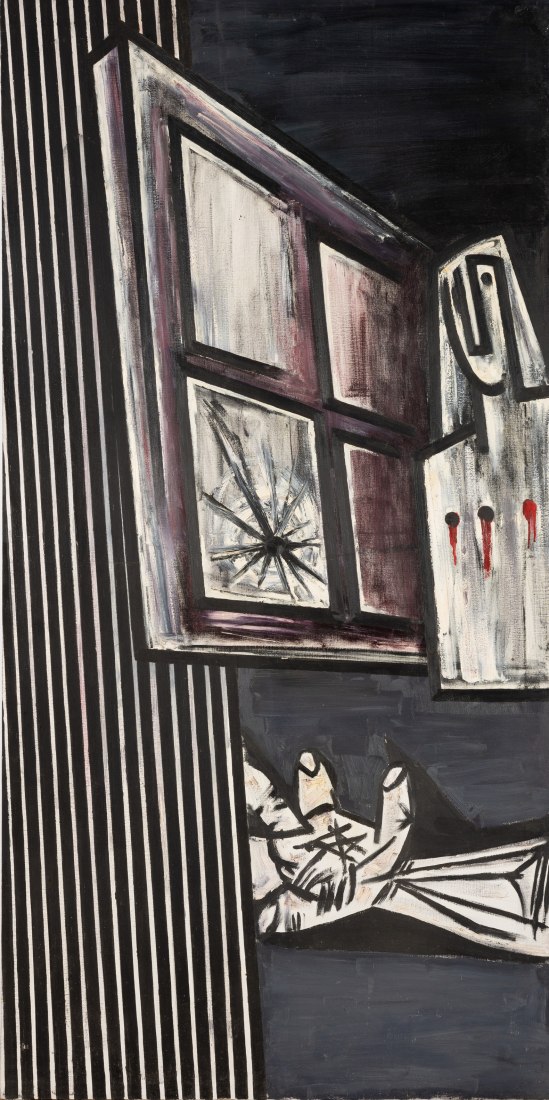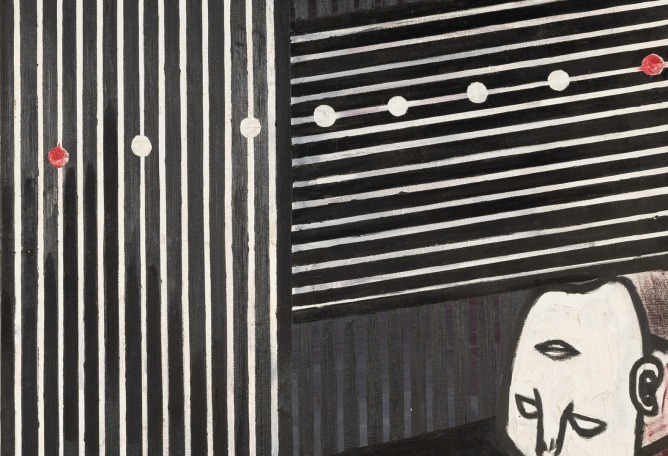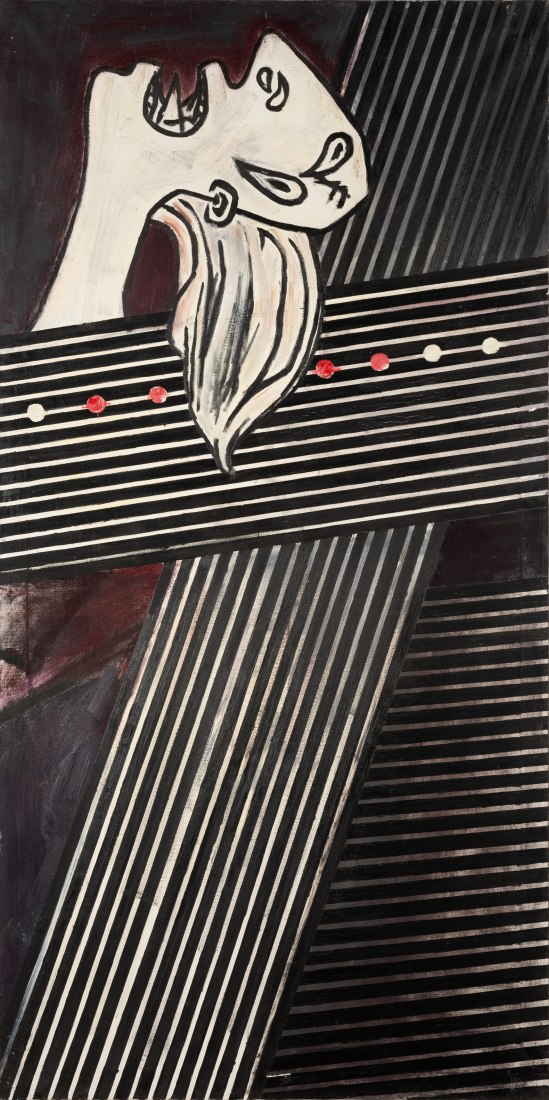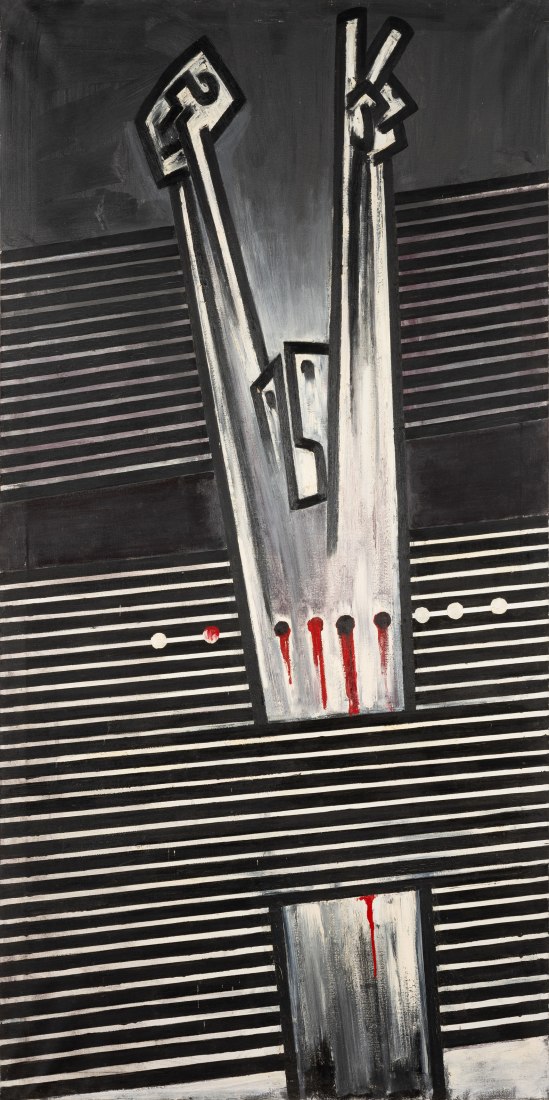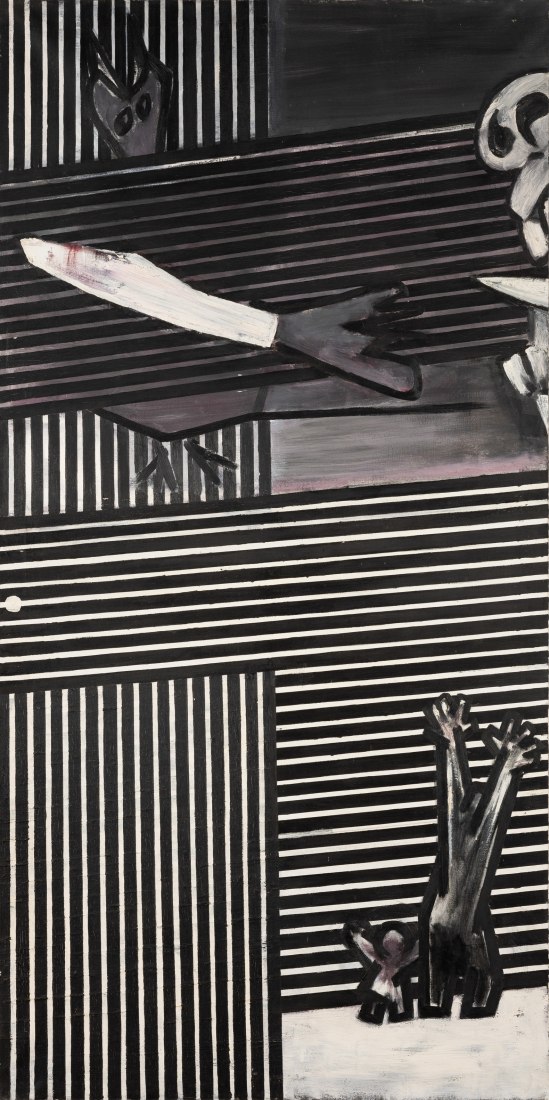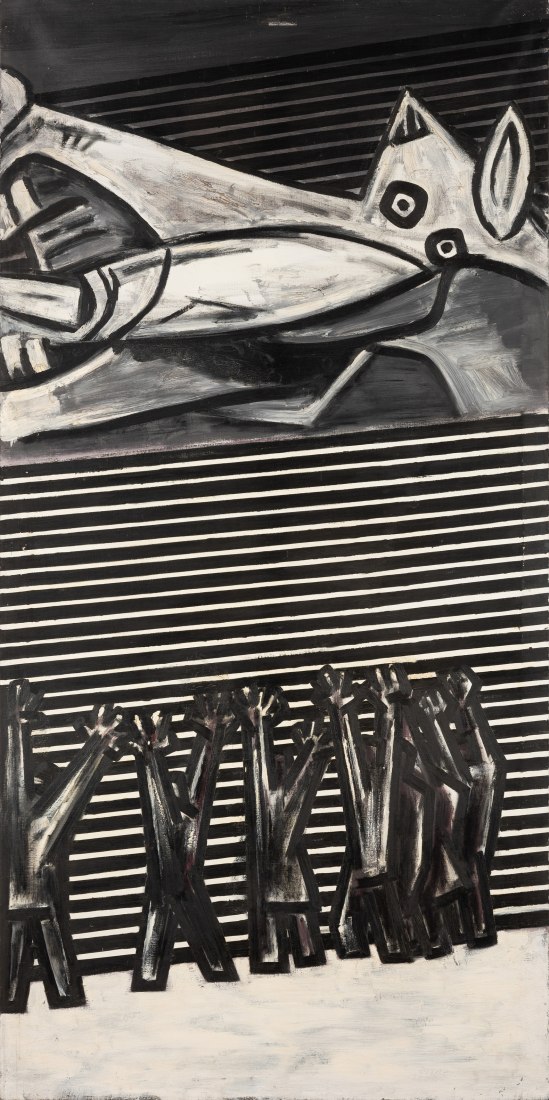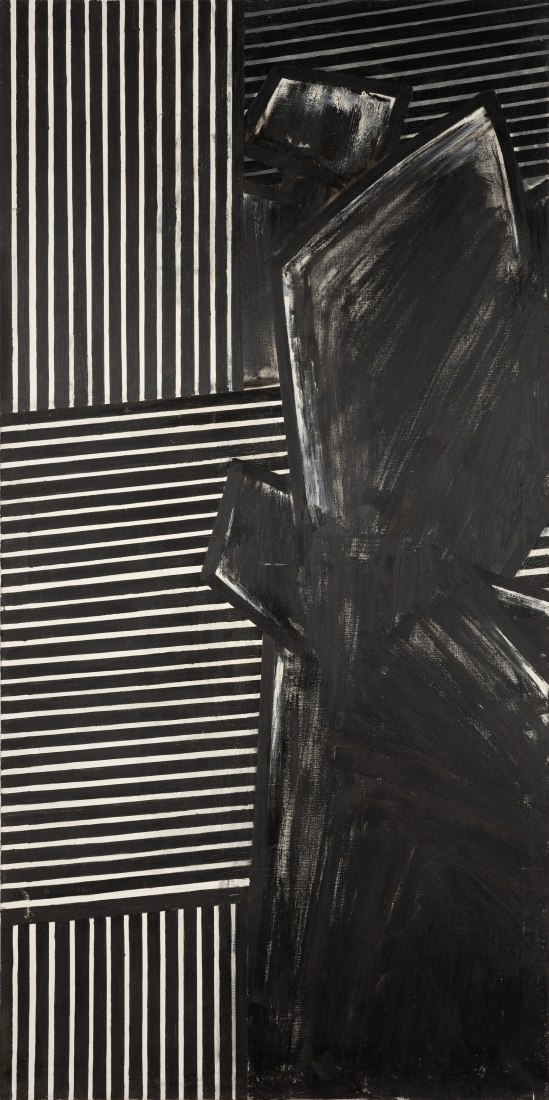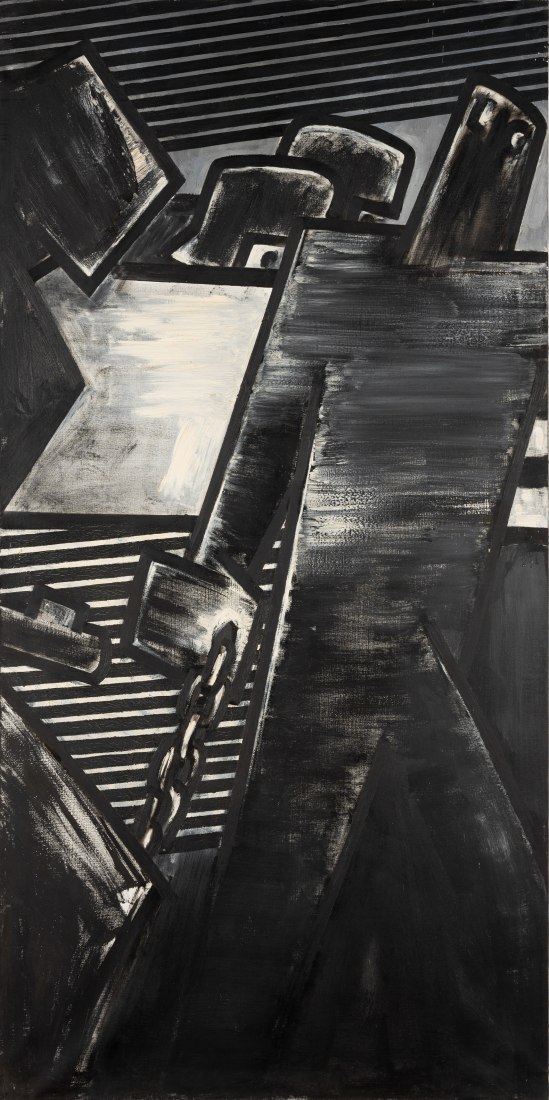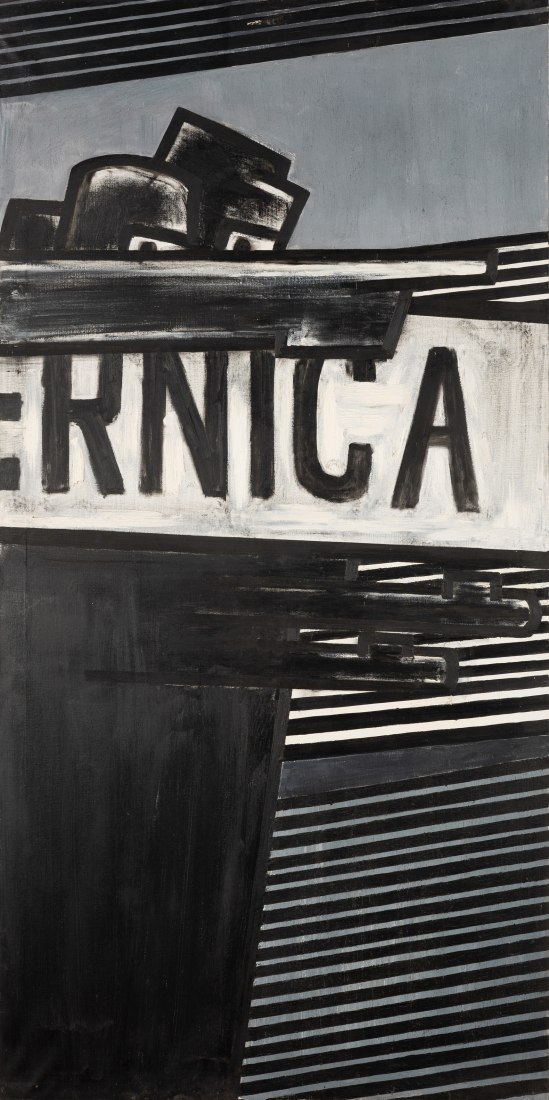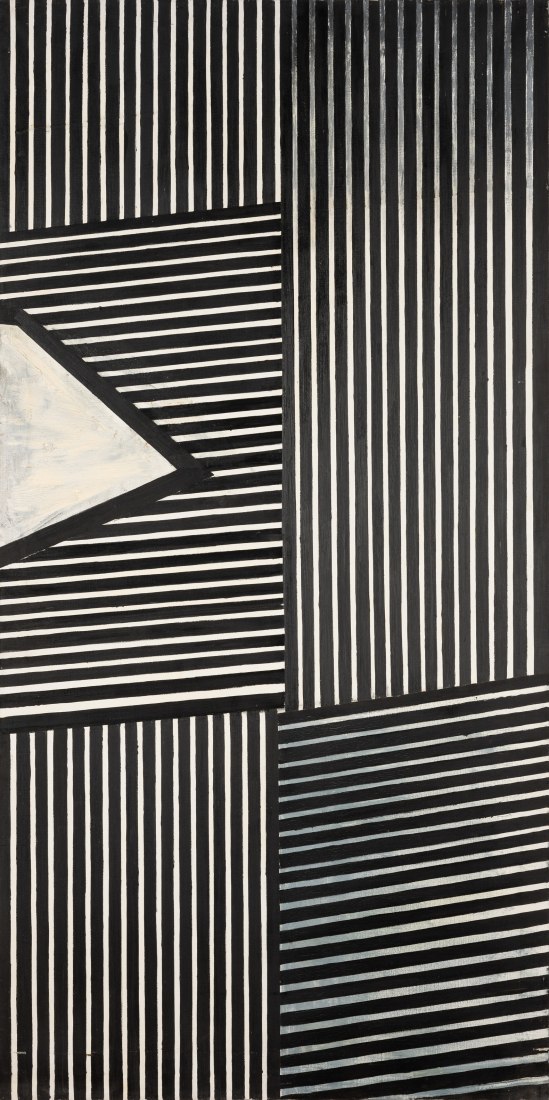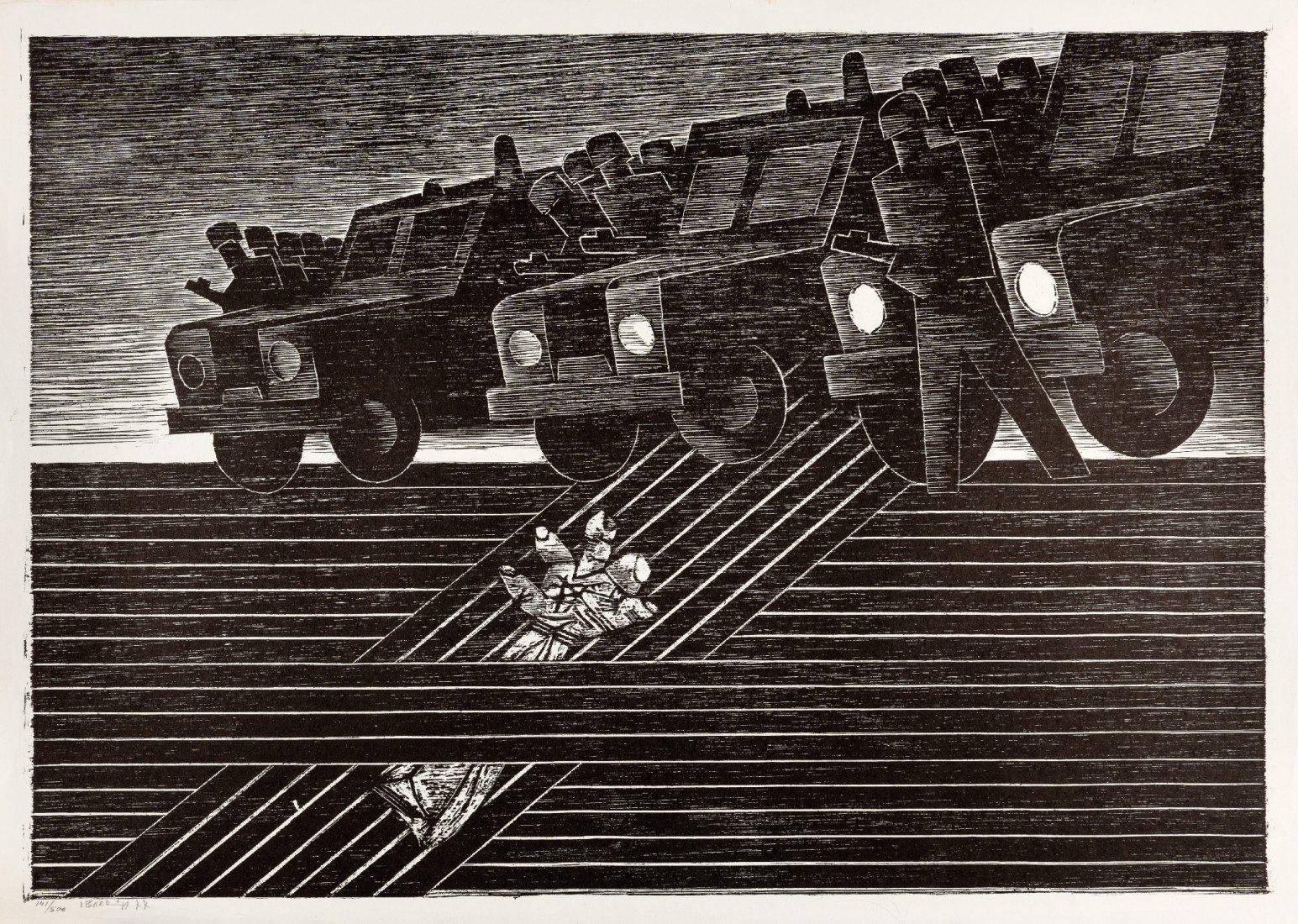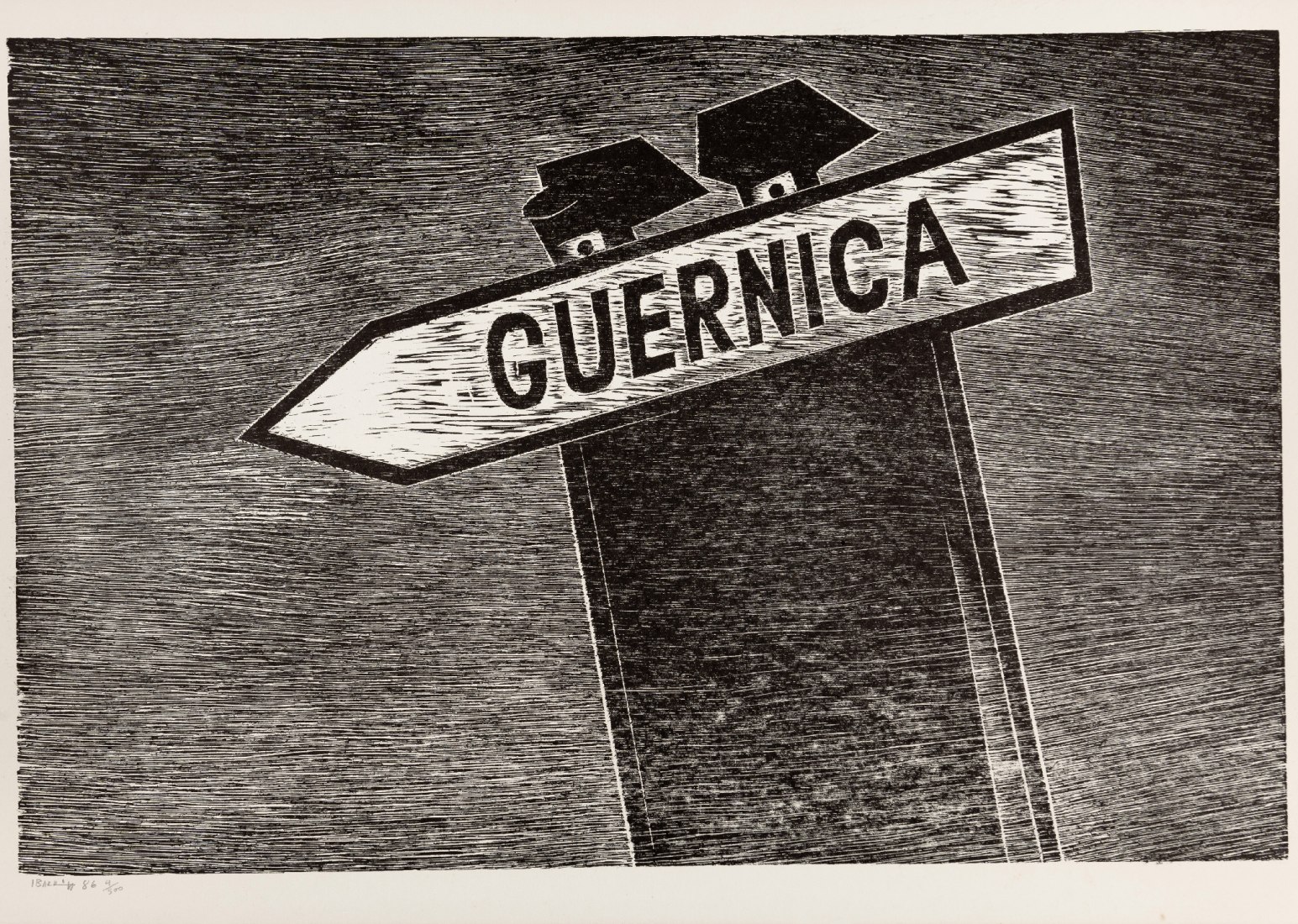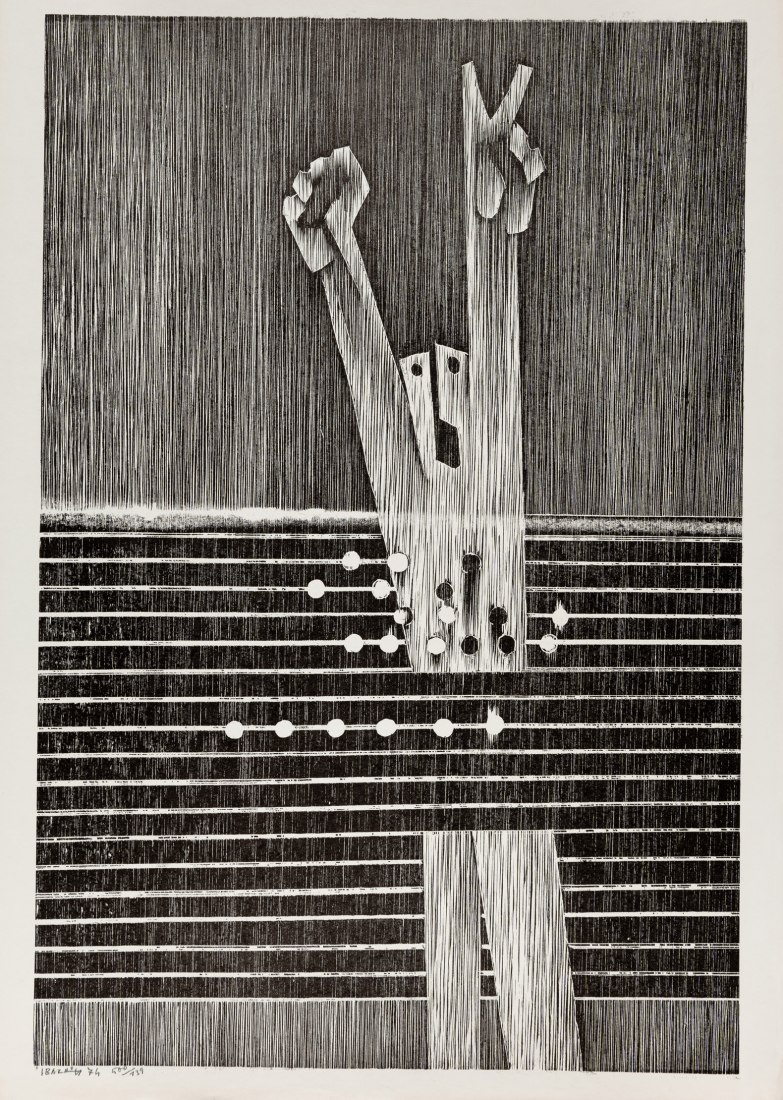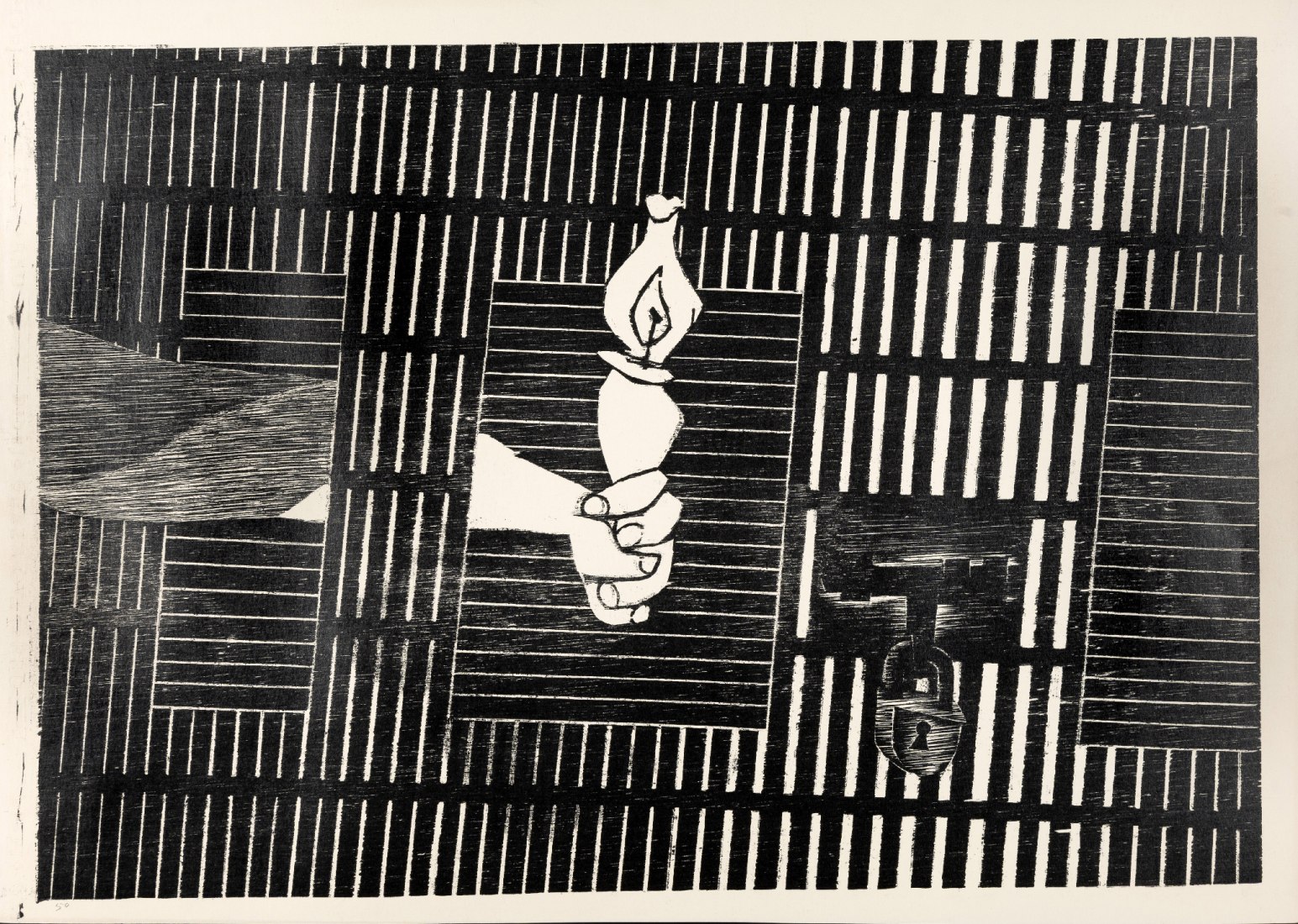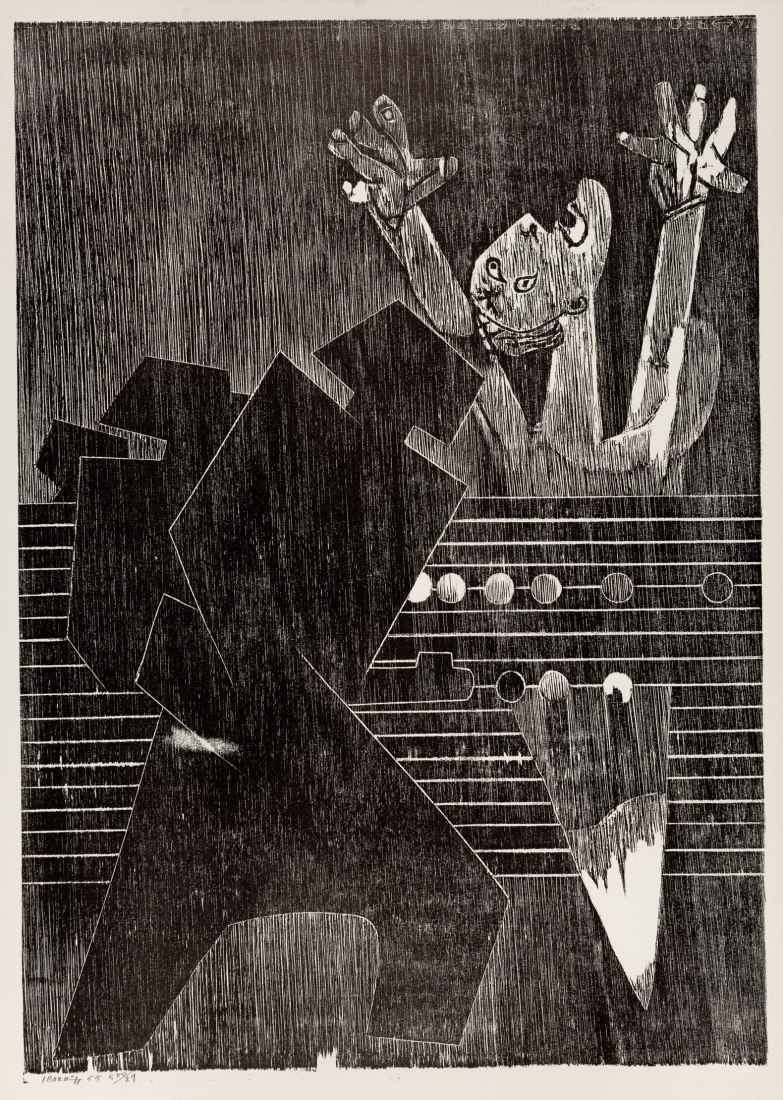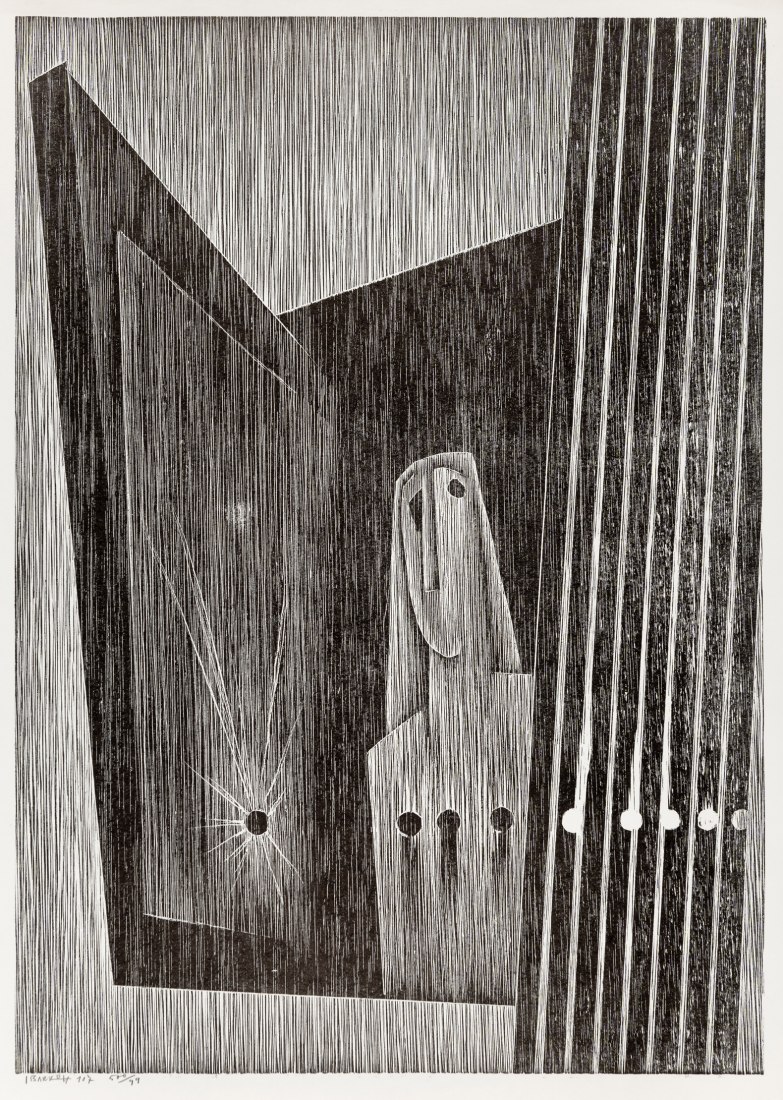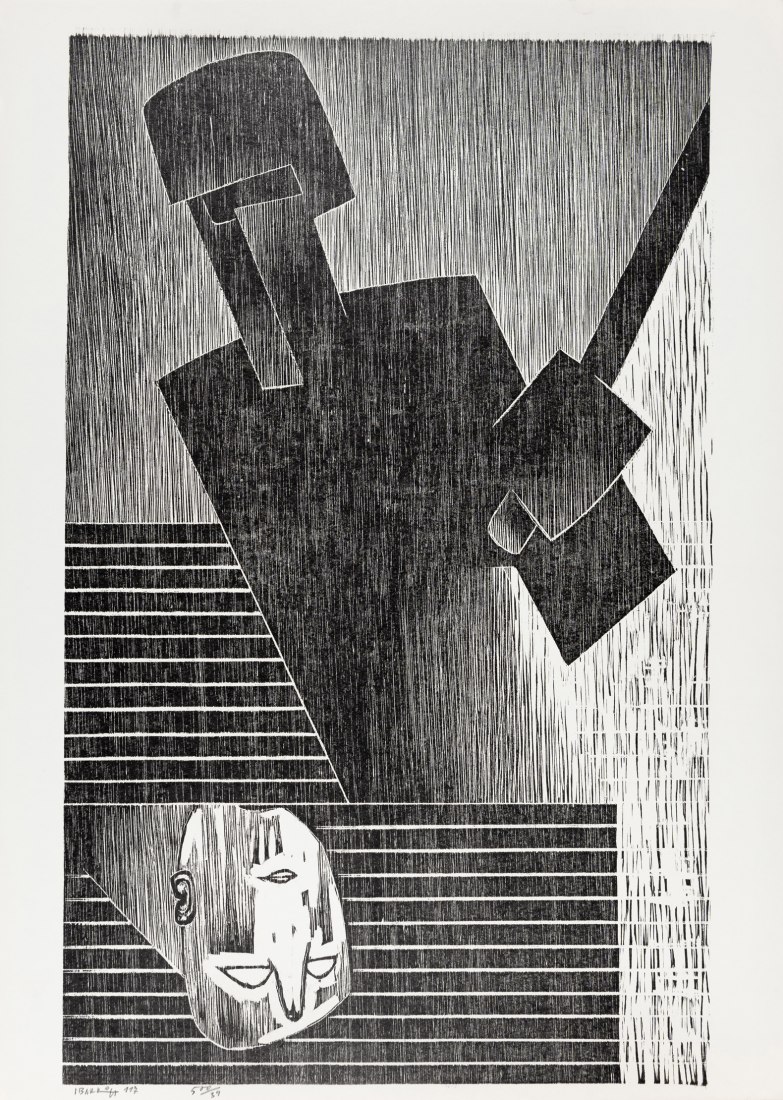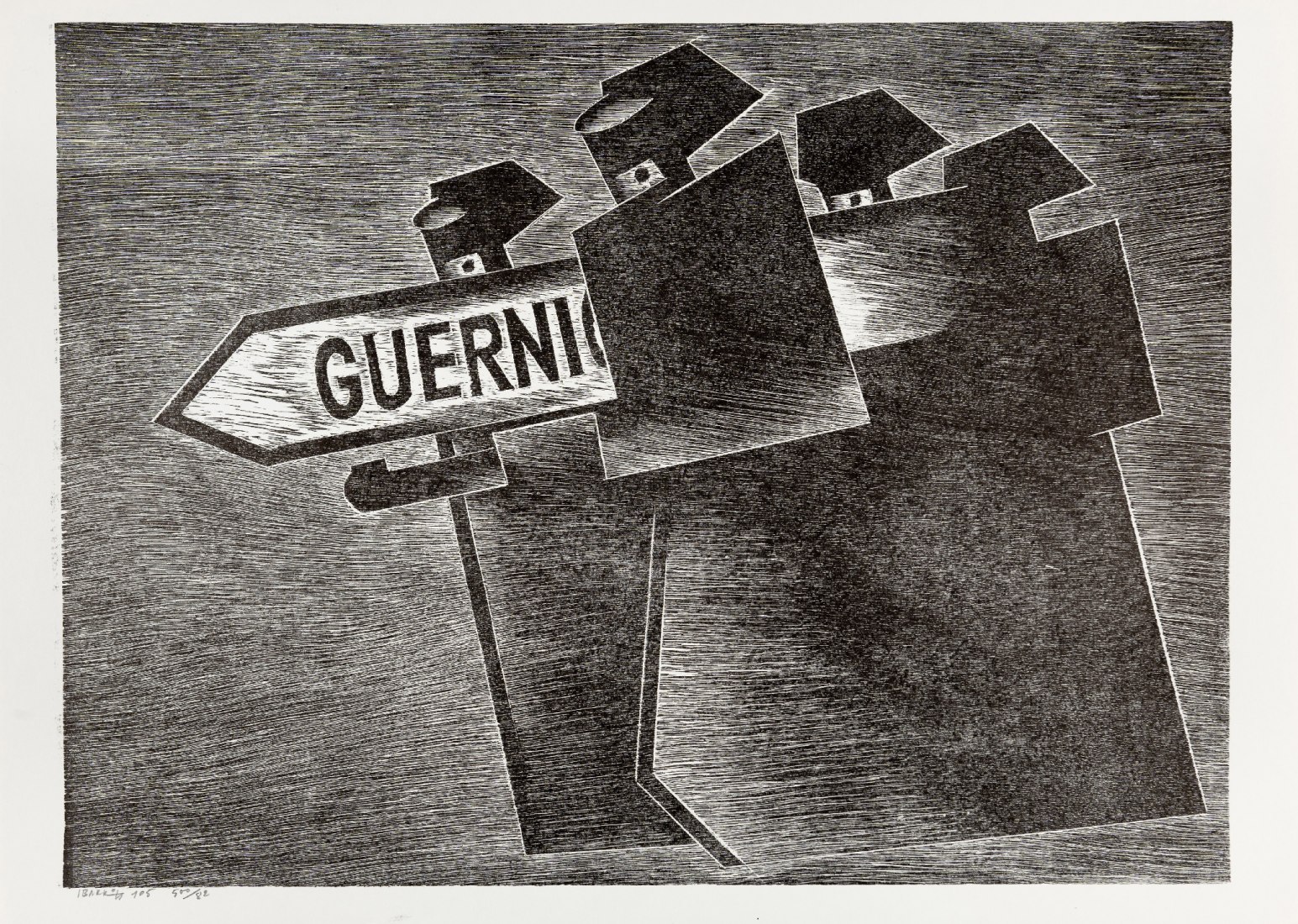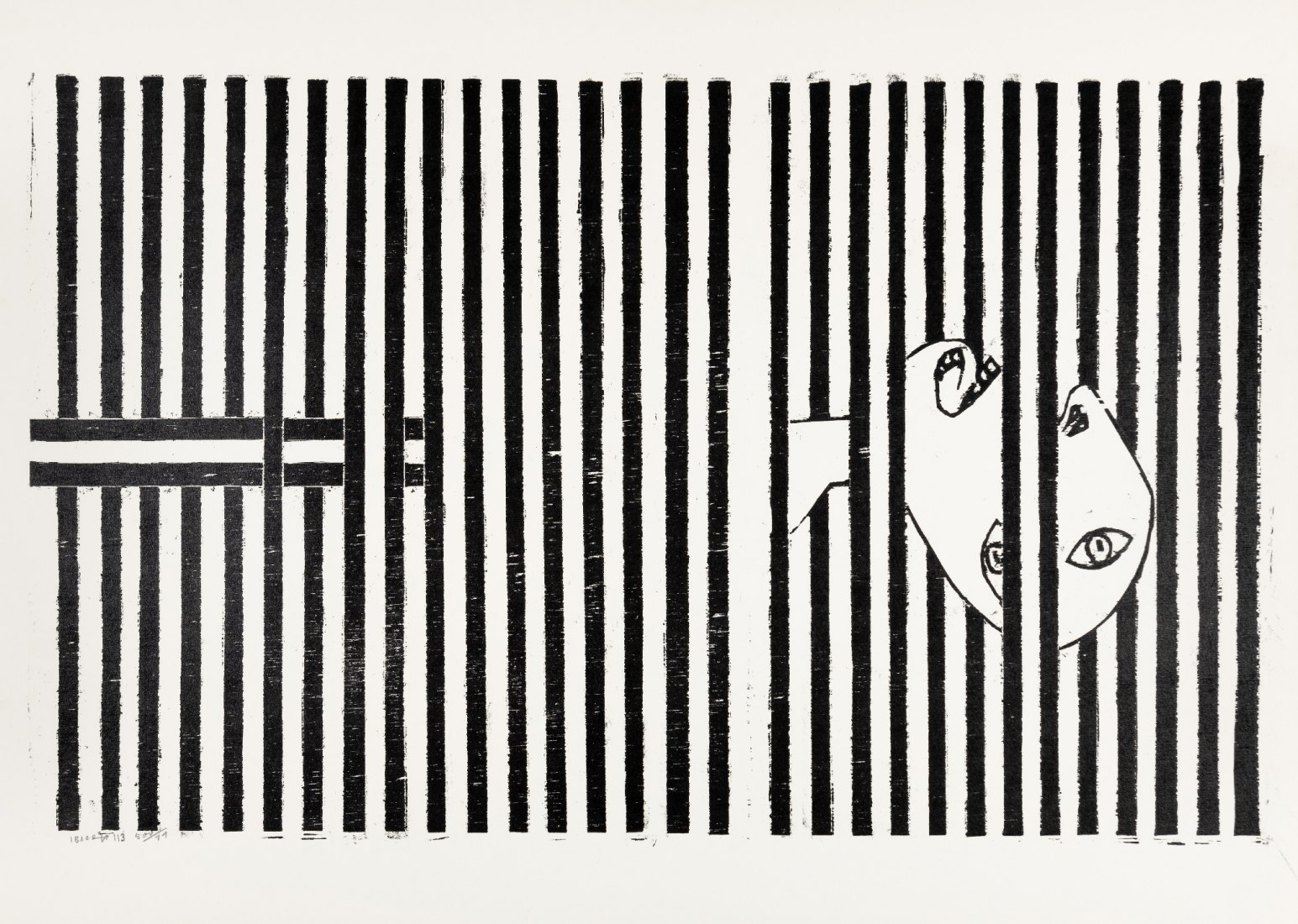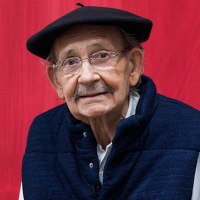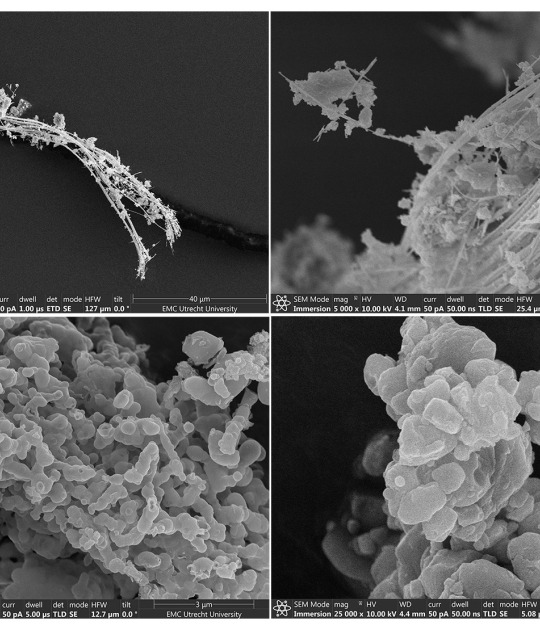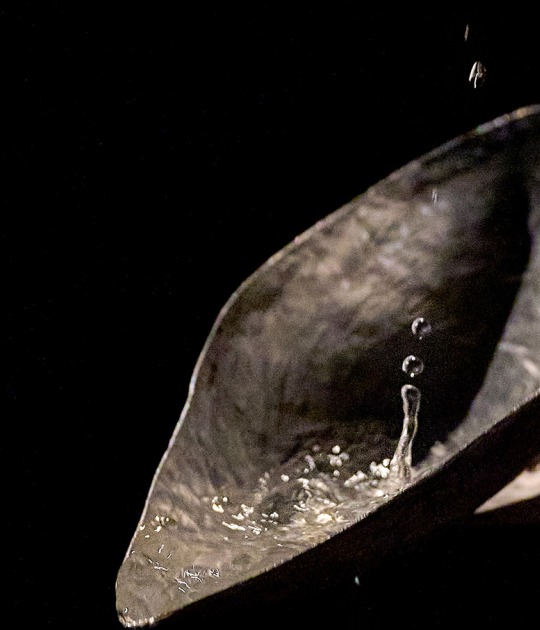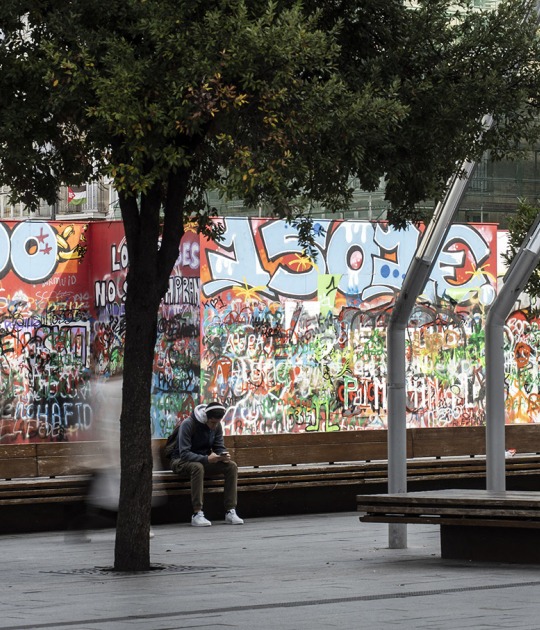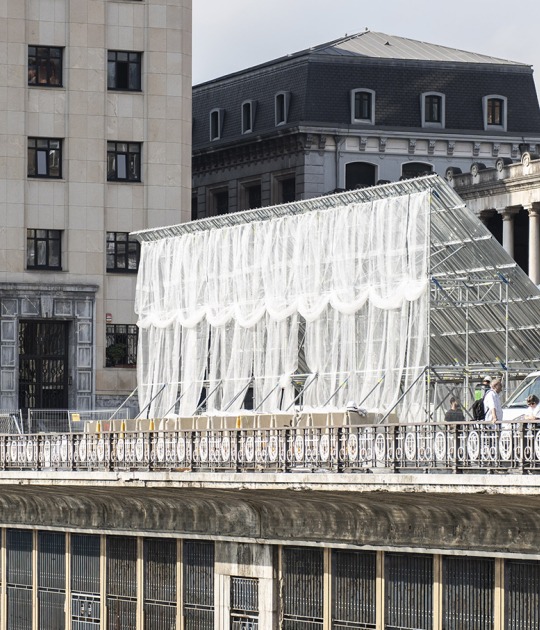At that time, the Guernica became almost an obsession for Ibarrola, so he decided to tackle his own updated version of this iconic work. The result is a monumental canvas composed of 10 panels that pay homage –with figuration and geometry– to the piece by the Malaga maestro.
The Basque artist reinterprets Picasso's work with his characteristic iconographies and represents the symbolic images of his historical context - with which he refers to masses of workers, the people, the repressive force, and the cancellation of all freedom - through its dramatic pattern of bars.
Description of project by Agustín Ibarrola
The forgotten work of Ibarrola: Guernica for Gernika
The Madrid gallery José de la Mano presents, in the next edition of ARCOmadrid, one of the most emblematic creations of the Basque artist Agustín Ibarrola, a work that has disappeared for decades. Its presentation at the Madrid fair is a tribute to the 40th anniversary
from the arrival of Picasso's Guernica in Madrid. On September 10, 1981, a Boeing 747 arrived in Madrid-Barajas. Among its passengers, in the cargo area, has traveled Picasso's masterpiece, his Guernica. This was now four decades ago.
A few years before this historic landing, a group of Basque artists and intellectuals led by Agustín Ibarrola launched a campaign for Picasso's Guernica to be installed in the Biscayan town, bombed in the middle of the Civil War, in 1937. The idea is to create a museum around the emblematic work along with other pieces by contemporary artists. In these years, Picasso's Guernica became almost an obsession for Ibarrola and he decided to tackle his own updated version of this mythical work. The result is a monumental canvas 2 meters high by 10 meters long. There are 10 panels that pay tribute –with figuration and geometry– to the piece by the Malaga master.
It is 1977, the dream that the mythical work travels to the Basque Country continues, even in these years the Basque Government commissioned a project for its installation, provisionally, in the Bilbao Fine Arts Museum, while the new building in Gernika is being built . It is in the Gray Room of this Bilbao museum where this work by Ibarrola is presented for the first time in 1977, almost as a first step in that dream museum; and, two years later, in 1979, again in the aforementioned Gray Room of this institution, with a scenographic montage that mixes this emblematic canvas with other geometric pieces and panels with their characteristic scenes of factories and workers. It is exhibited a third time, the following year, in the Municipal Hall of the Barakaldo Town Hall and, probably, in 1981 in the Art Hall of the Caja Laboral Popular de Bilbao in the exhibition “Gernika Gernikara” (Guernica for Gernika). The rest of the story is known.
Picasso's Guernica, which has been exhibited at the MoMA in New York since 1939, arrives in Madrid and is installed in the Casón del Buen Retiro of the Prado Museum, following the will of Picasso himself. In 1992 he moved permanently to the recently opened Museo Reina Sofía in Madrid. The work of Ibarrola, which was born to accompany that of Picasso, would never coincide with it. In fact, for decades it has been kept, practically forgotten, in the Basque artist's workshop without being exposed to the public again.
It is in 2020, preparing an exhibition of the Basque artist, when the gallery owner José de la Mano accidentally looks at an old catalog in which, behind some geometric works, appeared what could be a version of Guernica. Ask the family and they tell you about this initiative to create a museum for the Basque town. It was stored together with other works by Ibarrola in the hamlet that, for decades, he has used as a study in the Biscayan town of Gametxo, near the famous forest of Oma. Today, coinciding with the 40th anniversary of the arrival of Picasso's work in Spain, the Guernica Gernikara de Ibarrola can be seen at the José de la Mano stand, in this edition of the ARCOmadrid fair.

